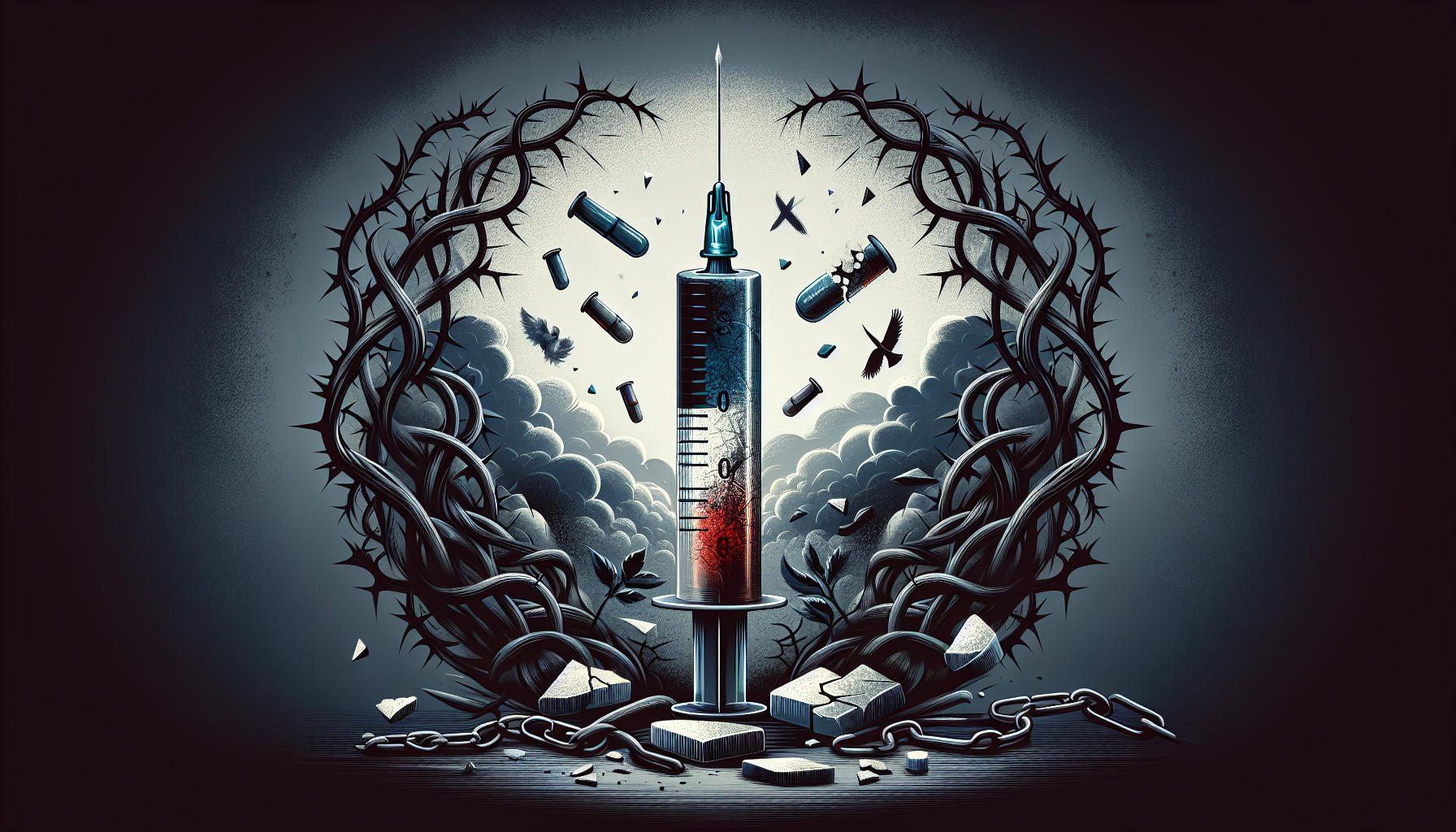August 27, 2024
How Prescription Painkillers Fuel Heroin Addiction
How prescription painkillers fuel the dangerous journey towards heroin addiction.
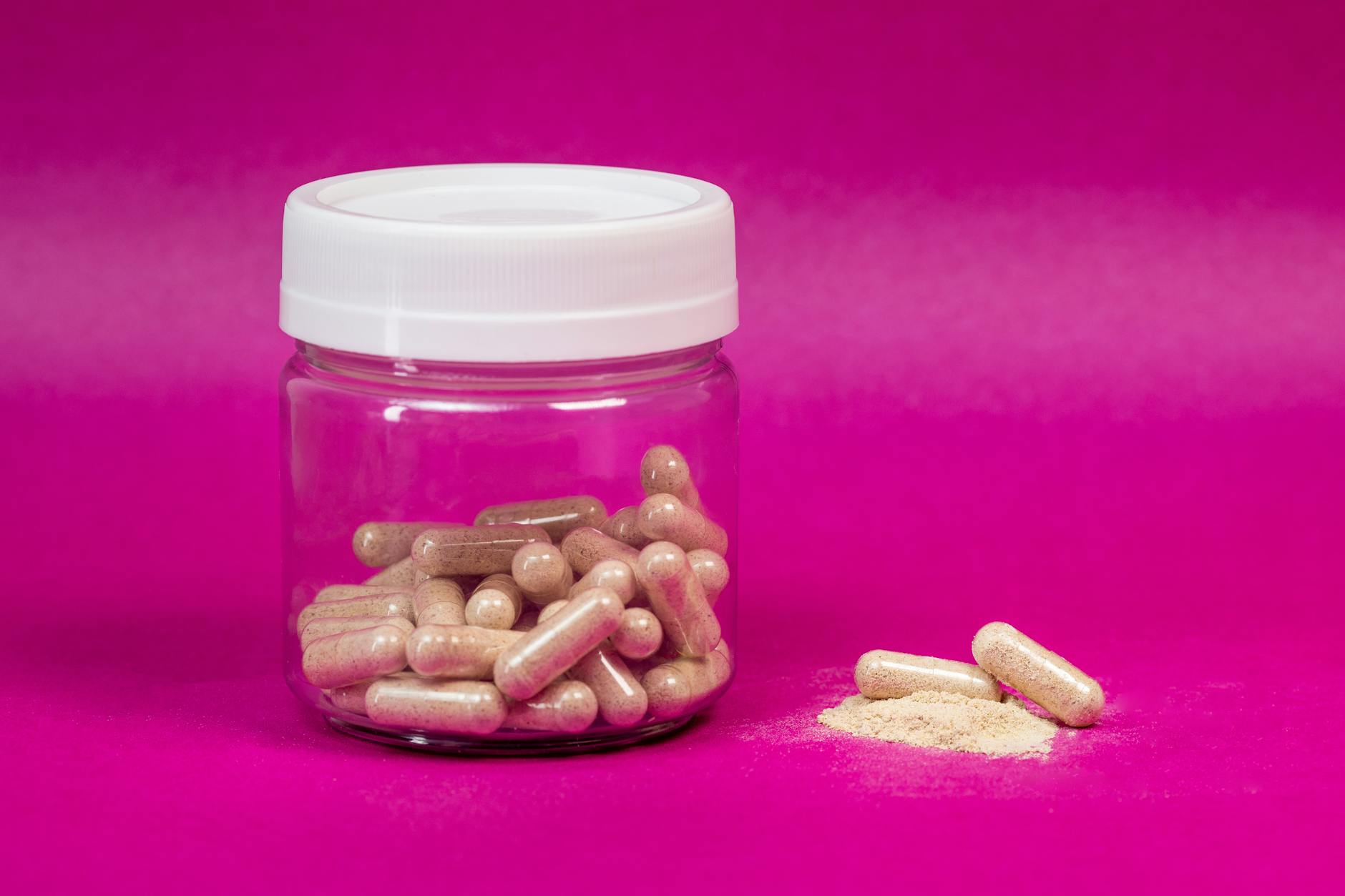
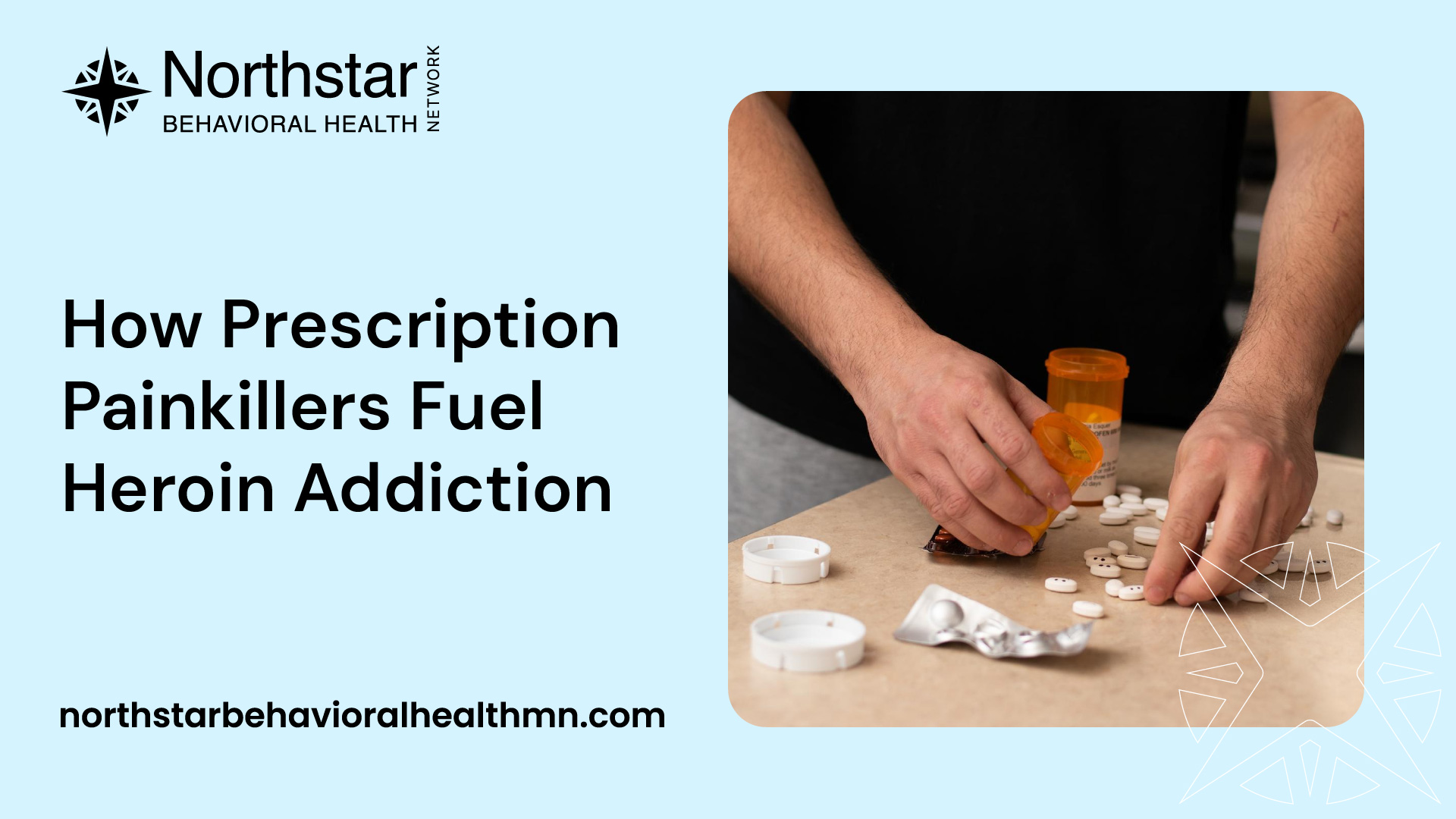
Understanding the Path to Addiction
In order to address the issue of prescription painkillers leading to heroin addiction, it is crucial to understand the path that individuals take from legitimate medical use to substance abuse. This section will explore the link between prescription painkillers and heroin addiction, as well as how prescription painkillers act as gateways to heroin.
The Link Between Prescription Painkillers and Heroin Addiction
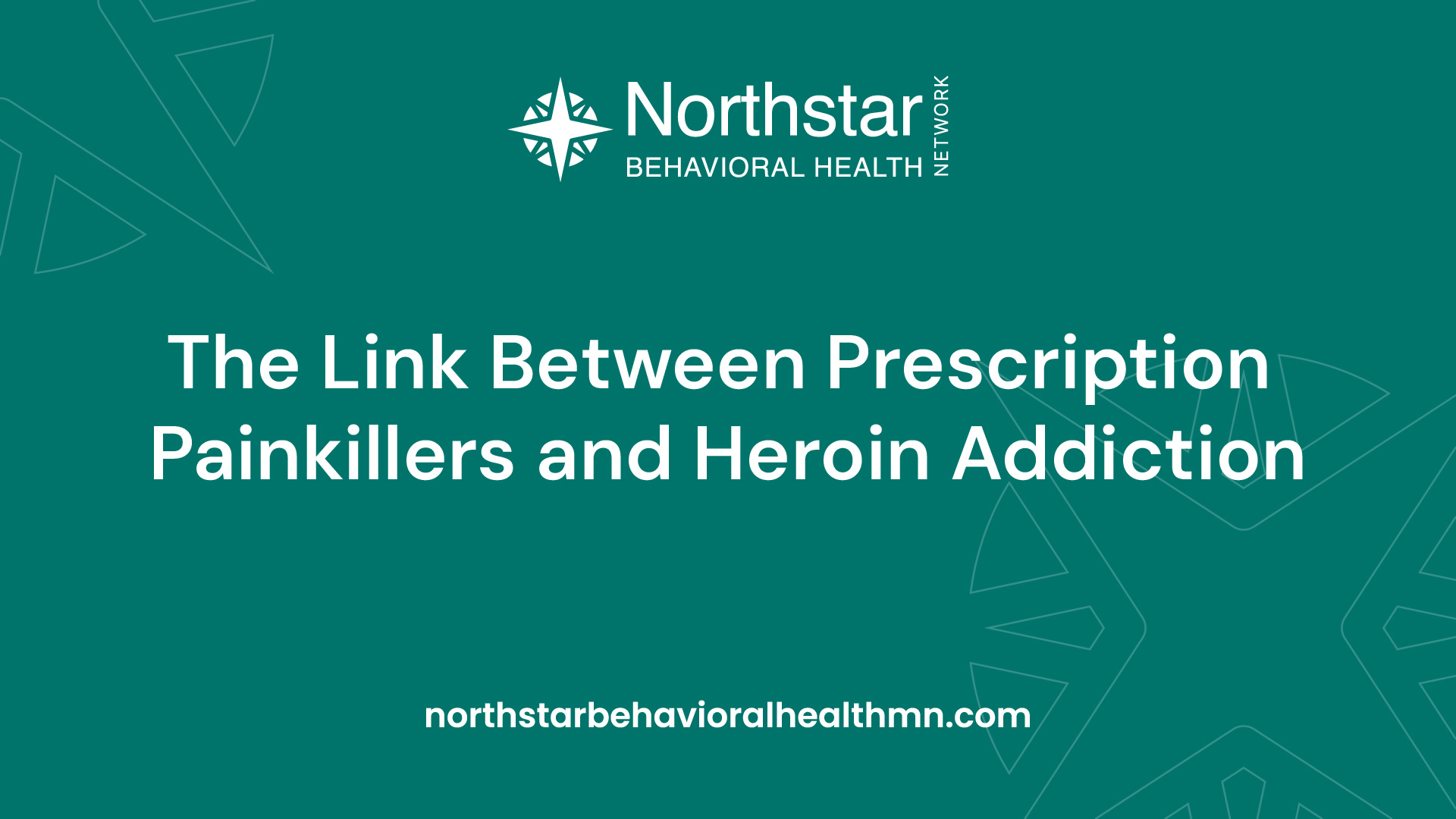
Prescription painkillers, such as opioids, are powerful medications commonly prescribed to manage severe pain. While these medications can be effective in relieving pain when used appropriately, they also carry a high risk of addiction. Many individuals who become addicted to prescription painkillers may eventually turn to heroin as a cheaper and more easily accessible alternative.
Research has shown a strong connection between the misuse of prescription painkillers and the subsequent use of heroin. According to the National Institute on Drug Abuse (NIDA), about 80% of heroin users report misusing prescription opioids before transitioning to heroin. This alarming statistic highlights the dangerous trajectory that can occur when individuals develop a dependency on prescription painkillers.
How Prescription Painkillers Act as Gateways to Heroin
There are several reasons why prescription painkillers can act as gateways to heroin addiction. One key factor is the similarity between opioids found in prescription painkillers and heroin. Both substances bind to opioid receptors in the brain, producing a euphoric effect and relieving pain. As individuals continue to misuse prescription painkillers, they may develop a tolerance, requiring larger doses to achieve the desired effects.
This tolerance can lead to seeking more potent and accessible drugs, such as heroin.
Another significant factor is the availability and cost of heroin compared to prescription painkillers. As individuals struggle to maintain their supply of prescription painkillers, they may turn to the illicit market, where heroin is often more readily available and less expensive. This shift is driven by the need to satisfy the cravings and dependency that have developed through the misuse of prescription painkillers.
It is important to note that not everyone who misuses prescription painkillers will progress to using heroin. However, the risk is significant, and understanding the connection between the two is crucial in addressing the issue and implementing effective prevention strategies.
By recognizing the link between prescription painkillers and heroin addiction, individuals, healthcare providers, and policymakers can work together to develop proactive measures to reduce the misuse of prescription painkillers and provide support for those struggling with addiction.
Impact of Prescription Painkillers
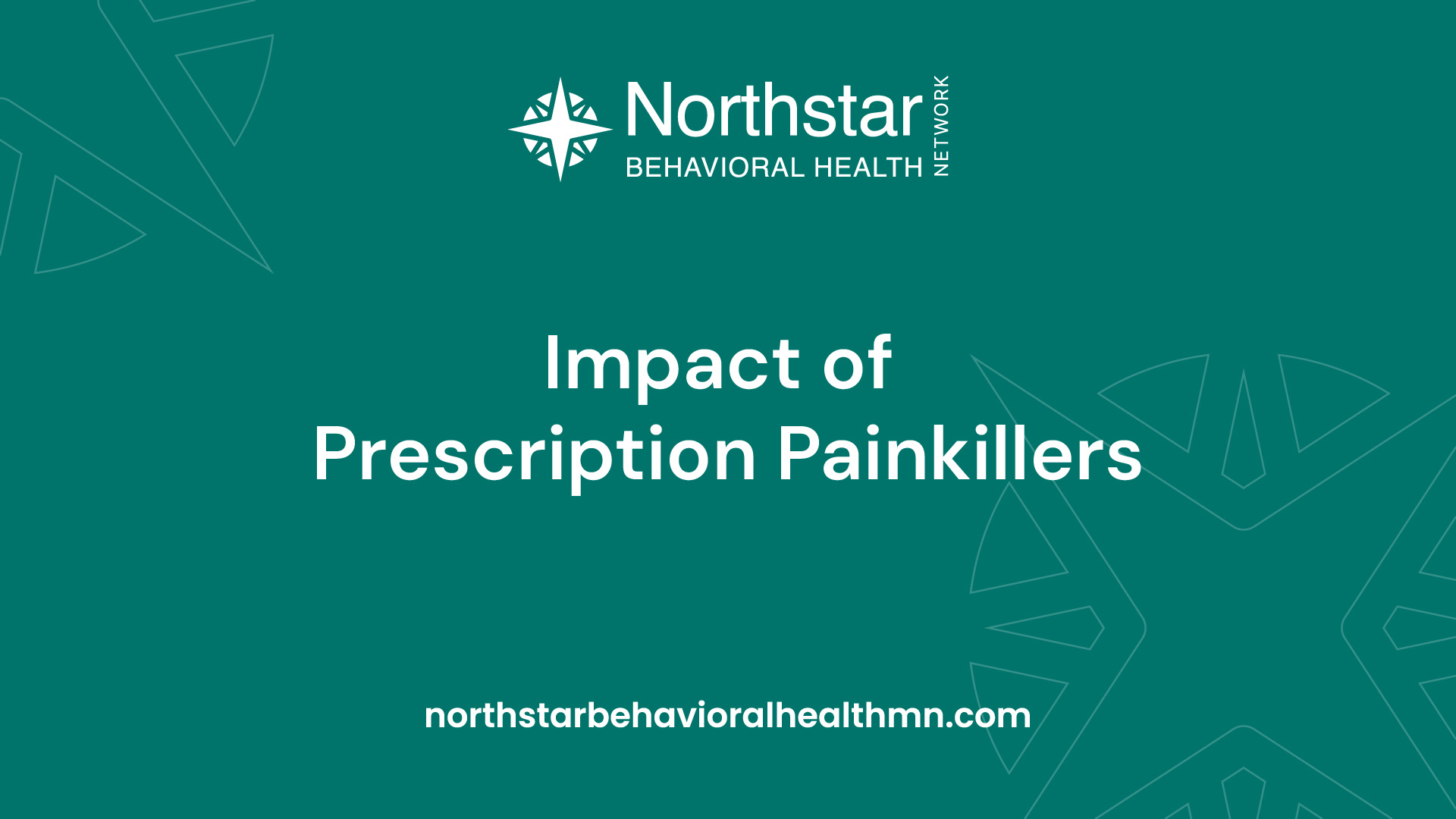
Prescription painkillers have a significant impact on individuals, leading to both misuse and dependency. Unfortunately, the misuse of these medications can also act as a gateway to heroin use, exacerbating the addiction crisis.
Misuse and Dependency on Painkillers
Prescription painkillers, such as opioids, are commonly prescribed to manage chronic or acute pain. However, when used improperly or without medical supervision, they can lead to misuse and dependency. Many individuals may initially start taking painkillers as prescribed, but over time, they may develop a tolerance to the medication, requiring higher doses to achieve the same level of pain relief.
Misuse of prescription painkillers can involve taking higher doses than prescribed, using them for non-medical purposes, or obtaining them without a legitimate prescription. This can be driven by various factors, including seeking relief from emotional or psychological distress, attempting to enhance the euphoric effects of the medication, or simply succumbing to peer pressure.
Over time, dependence on prescription painkillers can develop, as the body becomes accustomed to the presence of the drug. The individual may experience withdrawal symptoms when attempting to reduce or stop the use of the medication. This physical dependence, coupled with the psychological effects of pain relief and euphoria, can contribute to a cycle of continued use and potential addiction.
Escalation to Heroin Use
One of the alarming consequences of prescription painkiller addiction is the potential escalation to heroin use. As individuals become increasingly dependent on painkillers, they may face challenges in obtaining a sufficient supply due to stricter regulations or limited access. This can lead them to seek alternative substances that can provide a similar high or alleviate withdrawal symptoms.
Heroin, an illegal opioid, may become an attractive option for individuals struggling with prescription painkiller addiction. Heroin is often cheaper and more readily available than prescription medications, making it an unfortunate substitute for individuals desperate to satisfy their cravings. According to the National Institute on Drug Abuse, nearly 80% of heroin users reported prior misuse of prescription opioids.
The transition from prescription painkillers to heroin is not only driven by the desire for a similar high but can also be influenced by social and psychological factors. Peer pressure, the influence of friends or acquaintances who use heroin, and a lack of awareness about the dangers of heroin can contribute to this escalation.
It is crucial to address the impact of prescription painkillers on individuals and the potential for heroin use. Awareness programs, education initiatives, and access to appropriate treatment options are essential in combating this epidemic. If you or someone you know is struggling with prescription painkiller addiction or heroin use, seeking help and support is vital. Check out our article on seeking help and support for more information on available resources and assistance.
Factors Contributing to the Transition
The transition from prescription painkillers to heroin addiction is influenced by various factors. Understanding these factors can shed light on how individuals can become entangled in the grip of heroin addiction. Two key contributors to this transition are the accessibility and availability of prescription painkillers and psychological and social influences.
Accessibility and Availability of Prescription Painkillers
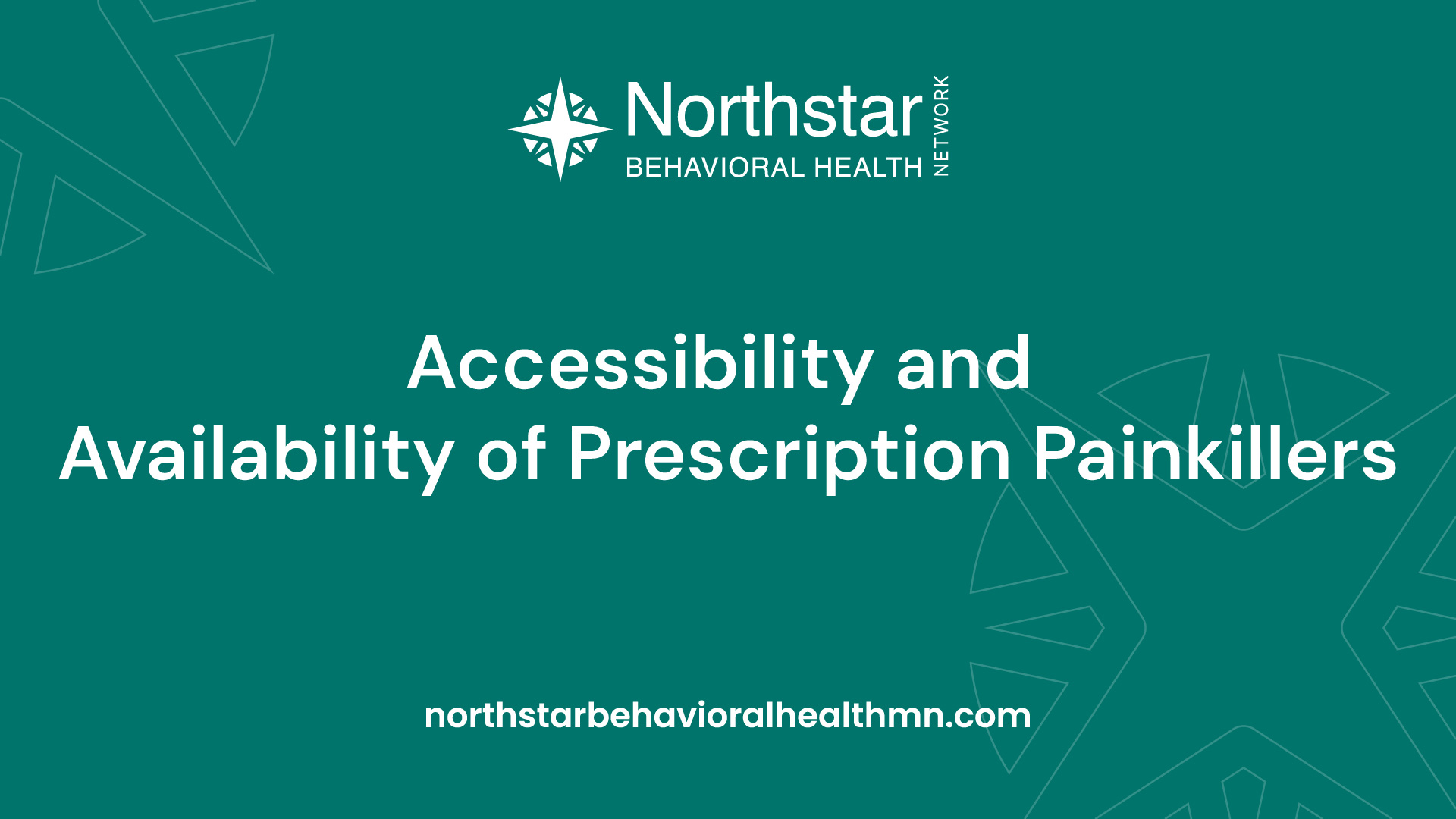
Prescription painkillers, such as opioids, are often prescribed by healthcare professionals to manage acute or chronic pain. However, the widespread availability and accessibility of these medications can contribute to their misuse and the subsequent transition to heroin.
One of the reasons prescription painkillers are readily accessible is due to legitimate prescriptions obtained by individuals for genuine medical needs. However, these medications may be misused by the individuals themselves or diverted to others who do not have a valid prescription. This can happen through various channels, including sharing medication with friends or family members or obtaining them from multiple healthcare providers, known as "doctor shopping."
Furthermore, the illegal market for prescription painkillers has also grown significantly. Individuals may obtain these drugs through illicit means, such as purchasing them from street dealers or online sources. The availability of these drugs through illicit channels can make them easily accessible to those seeking them for non-medical purposes.
Psychological and Social Influences
Psychological and social factors play a significant role in the transition from prescription painkillers to heroin addiction. Individuals who are vulnerable to substance use disorders or have a history of mental health issues may be more susceptible to this transition.
Psychologically, individuals may develop a dependence on prescription painkillers due to the euphoric effects they produce. This can lead to an increased tolerance, where higher doses are needed to achieve the desired effect. As the dependence grows, individuals may seek alternative substances, such as heroin, to satisfy their cravings.
Social influences also contribute to the transition. Peer pressure, social norms, and the desire to fit in or escape emotional pain can drive individuals to experiment with drugs. In some cases, individuals may be exposed to heroin through their social circles, leading to the exploration of this highly addictive substance.
It's important to address these psychological and social influences in addiction prevention and intervention efforts. By promoting awareness, providing education on the risks of prescription painkiller misuse, and offering support for mental health issues, individuals can be better equipped to resist the temptation of heroin and break the cycle of addiction.
Understanding the factors that contribute to the transition from prescription painkillers to heroin addiction is crucial in developing effective prevention strategies and providing appropriate support and treatment options. By addressing the accessibility and availability of prescription painkillers and addressing psychological and social influences, we can work towards breaking the chain of addiction and promoting healthier lives for individuals struggling with substance use disorders.
Breaking the Cycle
When caught in the grips of addiction, breaking free from its hold can feel like an uphill battle. However, it's essential to remember that recovery is possible. Here, we will explore two crucial steps in breaking the cycle of prescription painkiller and heroin addiction: seeking help and support, and exploring treatment options and recovery programs.
Seeking Help and Support
One of the most important steps in overcoming addiction is recognizing the need for help and reaching out for support. It's common for individuals struggling with addiction to feel ashamed or afraid to seek assistance. However, it's vital to remember that addiction is a medical condition that requires professional help.
There are various avenues to seek help and support. Here are a few options:
- Reach out to a healthcare professional: Start by scheduling an appointment with a healthcare provider who specializes in addiction medicine. They can assess your situation, provide guidance, and recommend appropriate treatment options.
- Join support groups: Support groups, such as Narcotics Anonymous (NA), can be incredibly beneficial for individuals in recovery. These groups provide a safe and non-judgmental environment where you can share experiences, gain insights, and receive support from others who have faced similar challenges.
- Lean on loved ones: Open up to trusted family members and friends about your struggle with addiction. Their support and understanding can make a significant difference in your journey to recovery.
Remember, seeking help is a sign of strength and courage. It takes bravery to confront addiction and take steps towards a healthier, drug-free life.
Treatment Options and Recovery Programs
Once you've taken the first step of seeking help, it's crucial to explore treatment options and recovery programs that are tailored to your individual needs. Here are some common approaches to consider:
- Inpatient rehabilitation: Inpatient or residential rehabilitation programs provide a structured and supportive environment for individuals seeking recovery. These programs typically involve a combination of individual therapy, group counseling, and educational sessions to address the physical, emotional, and psychological aspects of addiction.
- Outpatient programs: Outpatient programs offer flexibility for individuals who may not require 24/7 supervision. These programs involve regular therapy sessions and counseling while allowing participants to continue with their daily lives.
- Medication-assisted treatment: Medication-assisted treatment (MAT) combines medication, such as methadone or buprenorphine, with behavioral therapy and counseling. This approach helps manage withdrawal symptoms and cravings while providing support for long-term recovery.
- Therapy and counseling: Behavioral therapies, such as cognitive-behavioral therapy (CBT) and motivational interviewing, play a crucial role in addiction recovery. These therapies help individuals identify and change unhealthy patterns of thinking and behavior, develop coping mechanisms, and build a strong support system.
- Holistic approaches: Some individuals find holistic approaches, such as yoga, meditation, and art therapy, to be beneficial in their recovery journey. These practices can help reduce stress, promote self-care, and enhance overall well-being.
It's important to remember that everyone's journey to recovery is unique. What works for one person may not work for another. The key is to find a treatment approach that aligns with your needs, addresses the underlying causes of addiction, and supports your long-term recovery goals.
Seeking help and exploring treatment options are vital steps in breaking the cycle of prescription painkiller and heroin addiction. Remember, you're not alone on this journey. With the right support, guidance, and determination, recovery is possible.
Overcoming Addiction
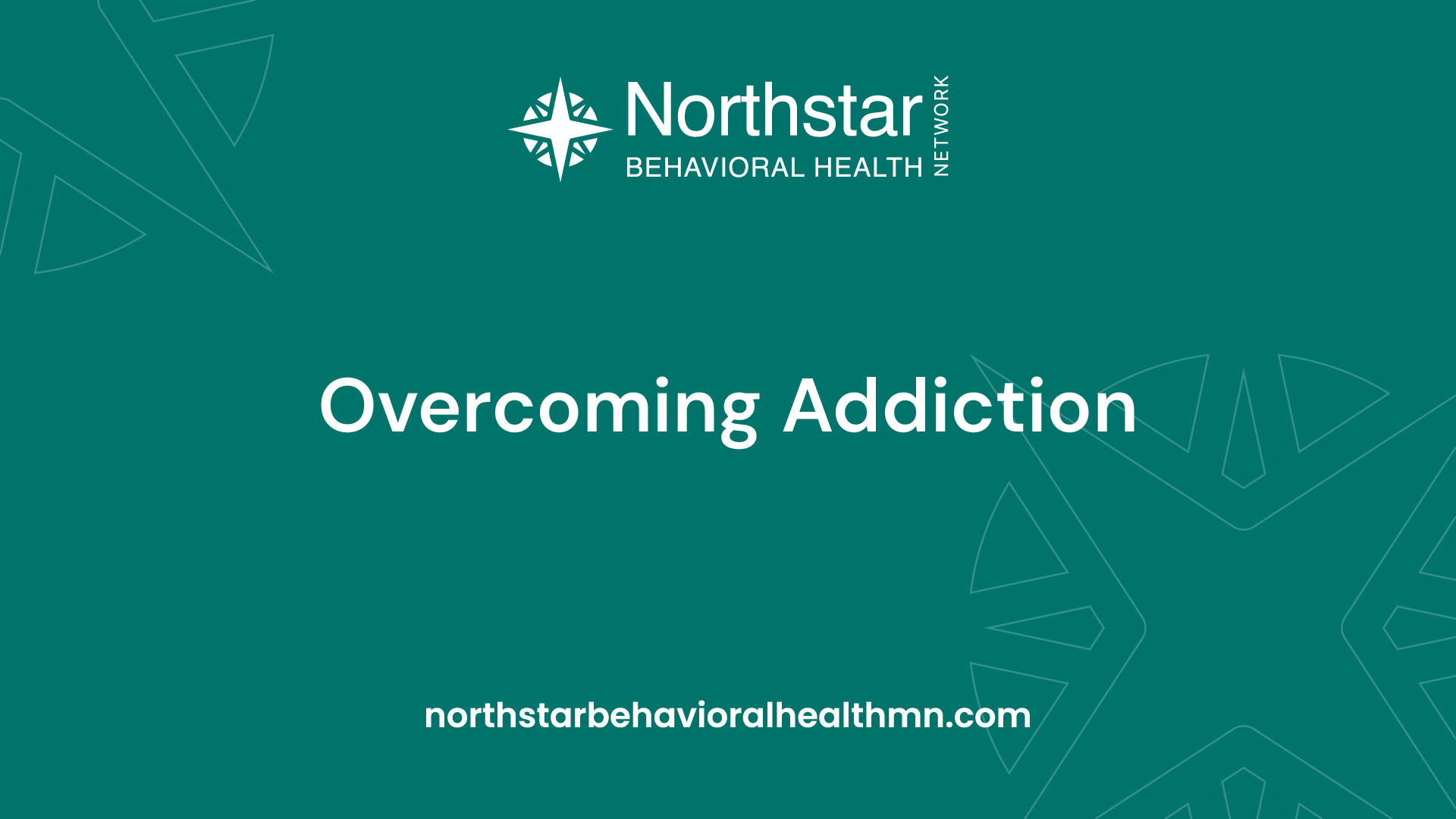
When it comes to overcoming addiction to prescription painkillers and heroin, there are various approaches that can be effective in supporting recovery. Two key components of the recovery process are behavioral therapies and counseling, as well as holistic approaches to recovery.
Behavioral Therapies and Counseling
Behavioral therapies and counseling play a vital role in helping individuals overcome addiction. These approaches focus on understanding the underlying causes of addiction, developing coping mechanisms, and adopting healthier behaviors and thought patterns. Here are a few commonly used behavioral therapies and counseling techniques:
- Cognitive-Behavioral Therapy (CBT): CBT helps individuals identify and modify negative thoughts and behaviors that contribute to drug use. It aims to teach new coping mechanisms and problem-solving skills to prevent relapse.
- Motivational Interviewing (MI): MI is a client-centered counseling approach that helps individuals explore their motivation to change addictive behaviors. It focuses on building intrinsic motivation and resolving any ambivalence about recovery.
- Contingency Management (CM): CM uses positive reinforcement, such as rewards or vouchers, to encourage individuals to remain drug-free. It provides incentives for achieving treatment goals and abstaining from drug use.
- Group Therapy: Group therapy brings together individuals with similar struggles to share experiences, provide support, and learn from one another. It can be a valuable source of encouragement and understanding during the recovery process.
Through these types of therapies and counseling, individuals can gain insight into their addiction, develop effective strategies for managing cravings and triggers, and build a strong support network. It's important to seek professional help from qualified therapists or counselors who specialize in addiction treatment. For more information, check out our articles on do you talk to your kids about prescription drug abuse? and twelve tips for educating kids about drugs.
Holistic Approaches to Recovery
In addition to behavioral therapies and counseling, holistic approaches can complement the recovery journey and support overall well-being. These approaches focus on healing the mind, body, and spirit. Here are some holistic strategies often used in addiction recovery:
- Mindfulness and Meditation: Mindfulness practices help individuals develop awareness of their thoughts, emotions, and bodily sensations. Meditation techniques promote relaxation, reduce stress, and increase self-awareness.
- Exercise and Physical Activity: Engaging in regular physical activity not only improves physical health but also releases endorphins, which can enhance mood and reduce cravings. Finding enjoyable activities like yoga, walking, or dancing can contribute to a positive mindset during recovery.
- Nutrition and Healthy Eating: A balanced diet rich in nutrients supports overall well-being and helps restore the body's natural functioning. Proper nutrition can contribute to increased energy levels, improved mood, and better overall health.
- Support from Peer Groups: Peer support groups, such as 12-step programs like Narcotics Anonymous (NA) or SMART Recovery, provide a sense of belonging and understanding. These groups offer support, encouragement, and guidance from individuals who have experienced similar challenges.
By incorporating holistic approaches alongside behavioral therapies and counseling, individuals can address the physical, mental, and emotional aspects of addiction recovery. It's important to remember that everyone's recovery journey is unique, and finding the right combination of approaches that work for you is key.
For more information on addiction and recovery, explore our articles on problems getting insurance coverage for drug rehab? you are not alone and the impact of March Madness on addiction.
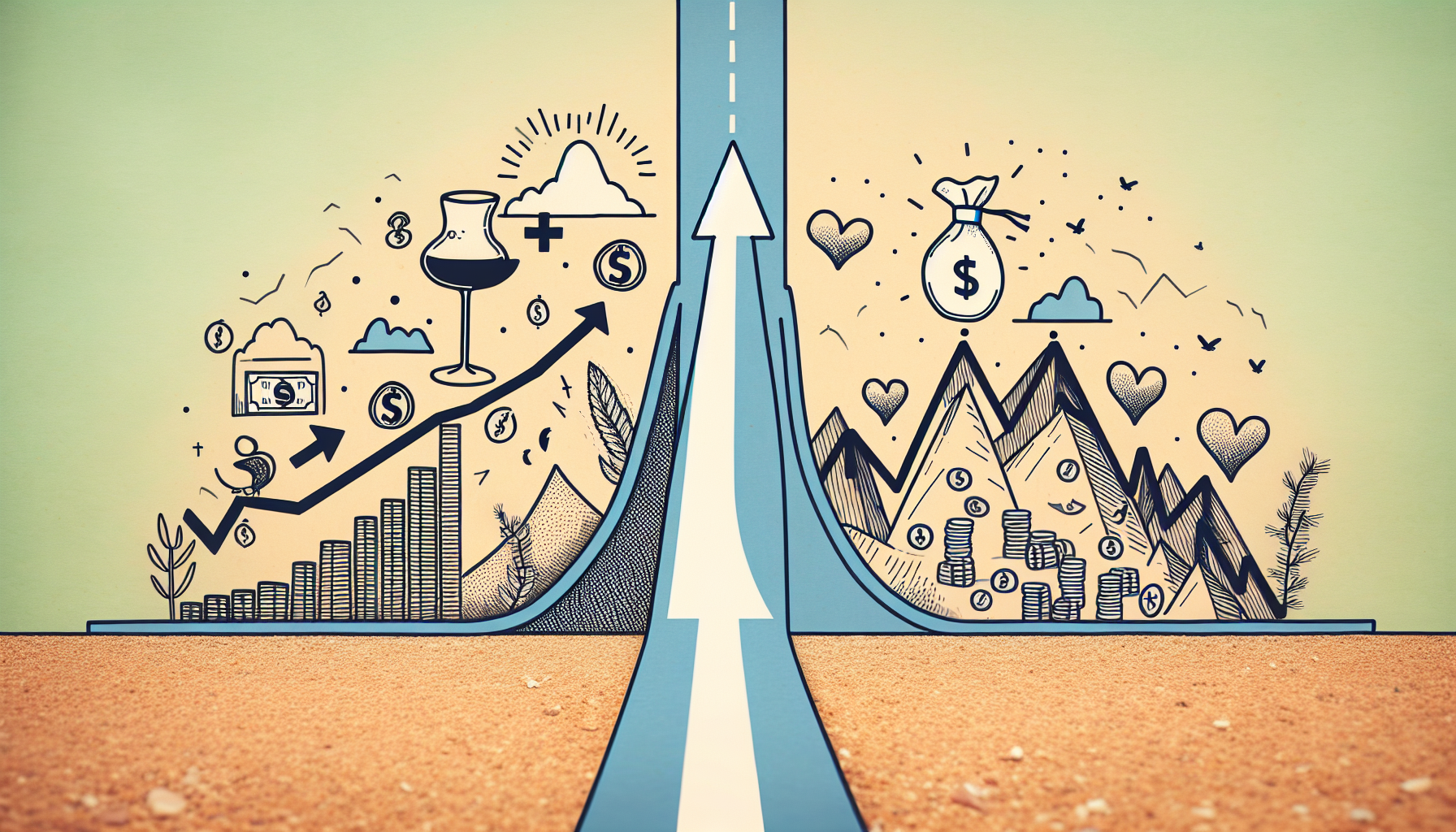
.jpg)




.jpg)
